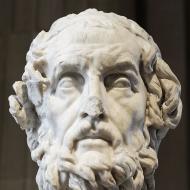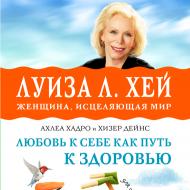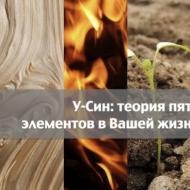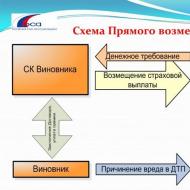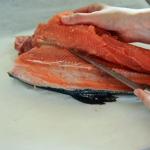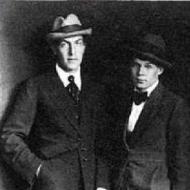
Aesthetic concept of imagism. Fundamental principles and provisions
- the primacy of the “image as such”; image is the most general category that replaces the evaluative concept of artistry;
- poetic creativity is the process of language development through metaphor;
- an epithet is the sum of metaphors, comparisons and oppositions of any subject;
- poetic content is the evolution of the image and epithet as the most primitive image;
- a text that has a certain coherent content cannot be classified as poetry, since it rather performs an ideological function; the poem should be a “catalogue of images”, read equally from the beginning and from the end.
Imagism was the last sensational school in Russian poetry of the twentieth century. This direction was created two years after the revolution, but in all its content it had nothing in common with the revolution.
On January 20, 1919, the first Imagist evening was held in the Moscow branch of the All-Russian Union of Poets. The next day the first Declaration was published ( magazine "Sirena", Voronezh, 1919, No. 4/5, January 30), which proclaimed the creative principles of imagism. It was signed by the poets S. Yesenin, R. Ivnev, A. Mariengof and V. Shershenevich, who called themselves “the front line of imagists,” as well as artists B. Erdman and G. Yakulov. This is how Russian imagism appeared, which had only the name in common with its English predecessor.
The term is borrowed from the avant-garde school of English-language poetry - imagism. This word first came to the attention of Russian readers in 1915 with the appearance of an article by Z. Vengerova, which talked about the London poetic group of imagists, led by Ezra Pound and Wyndham Lewis.
One of the organizers and recognized ideological leader of the Imagists in Russia was V. Shershenevich. Known as a theorist and propagandist of imagism, a fierce critic and subverter of futurism, he began as a futurist. The association included quite different and dissimilar poets. For example, critics have repeatedly noted that R. Ivnev’s poetry does not quite meet the requirements of imagist theory. But his comrades in the unification highly valued Ivnev’s poems and considered him one of their own.
At different times, the Imagists had several publishing houses at their disposal: "Imagists", "Chihi-Pikhi" and "Sandro", the famous literary cafe "Pegasus Stall" (closed in 1922), as well as the magazine "Hotel for Travelers in Beauty" ( in total, during its existence, 1922 - 1924, 4 issues were published). Over the course of 5 years of active activity, the Imagists were able to gain great, albeit scandalous, fame. Poetic debates constantly took place, where the masters of the new movement proved the superiority of the new poetic system over all previous ones.
The creative differences of the Imagists led to a division into the right (Yesenin, Ivnev, Kusikov, Gruzinov, Roizman) and the left wing (Shershenevich, Mariengof, N. Erdman) with opposing views on the tasks of poetry, its content, form, image. In 1924, S. Yesenin published in the newspaper ( "Pravda", August 31) letter in which he announced his resignation from the Imagist group. With Yesenin’s departure, the official organ of the Imagists, “Hotel for Travelers in Beauty,” came to an end.
The result of the theoretical and practical activities of the Imagists was summed up by Shershenevich in the article “Do Imagists Exist?” ( newspaper "Reader and Writer", 1928, February 1). Admitting that “Imagism now exists neither as a movement nor as a school,” he explains its demise this way: “This happened due to objective reasons that lie outside poetry.<...>The essence of poetry has been switched: from art it has been turned into polemic.<...>Personality has been taken away from poetry. And poetry without lyricism is like a racing horse without a leg. Hence the completely understandable collapse of imagism, which all the time insisted on the poeticization of poetry."
Imagism in literature is known to everyone who is familiar with the work of writers and poets of the Silver Age. Imagism is not such a large movement, so it is not considered as a separate component of the literature of this period.
Where did the term come from?
Imagism in literature appeared after one English avant-garde poetic school became widely known. This term was borrowed from there. This school became known as the school of imagism.
In Russia, this term was first encountered after people in our homeland heard about the Imagists in England in 1915. It was after this that the article “English Futurists” appeared in the Russian press, authored by Z. Vengerova. This publication told its readers about the famous English poetic group, which included Eliot, Hume, Pound and Aldington.
The essence of the flow
Imagism in the literature of England, which appeared in the 1910s, was determined by the exact task that its representatives set for themselves. The main goal of this movement was to depict the world exactly as it appeared in reality. If before this poets presented the world to the reader in an abstract and poetic way, now they presented it more realistically and pessimistically.

But the main difference between this movement was that representatives of imagism presented new and fresh ideas to the public. The term, derived from the English image, already speaks for itself. Representatives of this movement made a lot of efforts to update the poetic language as much as possible. These attempts can be seen in the images and forms of poems of the Silver Age.
Imagism in Russian literature
V. Shershenevich became the first representative of this movement in Russia. His book “Green Street” became the first printed publication written in the spirit of imagism in the literature of the 20th century. In 1916, the writer, despite the fact that he had not yet completely said goodbye to futurism, called himself an imagist. Shershenevich pays special attention to the content of the poetic image. Only in 1918 did the writer say that this movement was much broader than futurism.
Only in 1919 did the term become firmly established in Russia. From this period, frequent references to Imagism in literature began.
What is imagism?
Let us give a definition of imagism in literature - this is a specific movement of literature, which implied the primacy of the word, the verbal image directly over the idea, which replaced Russian futurism.
Declaration of representatives of imagism
This movement played a very important role in Russian literature. Mentions of imagism in the literature of the Silver Age appeared in all encyclopedias. The group of poets who supported this movement placed great emphasis on imagery in their activities. It was this that was considered the main characteristic feature of the poetry of the Silver Age.

In 1919, a so-called “declaration” of all imagist poets appeared in one of the famous Russian magazines. This declaration became the first manifesto of a new literary movement. Poets who were considered adherents of the new direction argued that in order for an image to be truly worthwhile, it was necessary to make it “alive.”
In addition, the Imagists argued that this law applies not only to literature and poetry, but also that this law is the basis of all art in general. The declaration described the entire creative program of the Imagists. Particular attention was paid to imagery. It was the poetic image that became the main part of the theory of imagism. It was precisely the impression that the created image left behind that became the main goal in this literary movement, direction.
Two times two equals five
Shershenevich's treatise became another document that spoke about the essence of imagism. The writer connected literature and mathematics as something similar, having much in common and probably having common origins. According to Shershenevich, understanding any text was absolutely unimportant, except for the author’s attempts to interpret the text. In order for an image to arise, the writer believed, it is necessary to accept the principle of pure and impure equality. Often, this was confirmed exclusively by carnal images and images.
Language requirements
Imagists offered the public their vision of the Russian language. Representatives of this movement argued that the language of poetry, or poetic, is very different from the literary language. It was believed that at its origins, it was distinguished by its imagery. That is why the Imagists adhered to the study of poetry at its very origins. By this method they tried to discover the true meaning of words, namely, the images that words carried at the very beginning of their appearance.

In addition, it should be noted that after a deep study of word formation, the main feature of imagism in literature was the creation of its own - new images.
Striving for the origins
Imagists put first place the ability to correctly and beautifully create images, and not just words. V. Shershenevich re-evaluated all the achievements of the futurists. He paid special attention to the theory that was created by representatives of futurism. This theory was called "Abstract". The writer came up with another concept of the “self-contained word” (the basis of the triad according to A. Potebnya’s linguistics).

Shershenevich identified the internal form, external form and original imagery in the composition of the word. Rejecting all sound and written forms of the word, the Imagists put the imagery of the word in first place. At the same time, representatives of imagism strived to ensure that the images they created were not repetitive or similar.
No unity
In matters of poetry, despite the fact that there was a community of imagists, there was no unity among the representatives of this literary movement. Those who were friends and comrades in the field of literary activity had completely different approaches to their work. The most prominent representatives of imagism in Russian literature were such famous poets as Sergei Yesenin, Anatoly Mariengof and Alexander Kusikov.
It is hardly possible to briefly characterize imagism in literature - this is an entire poetic stage that included a huge number of nuances and subtleties.
The Imagist school included poets who had completely different views on theory and had completely different creative approaches. Even between Mariengof and Kusikov one can find many more differences than similarities. The imagism of the first is the most rustic, like Yesenin’s, if you look at some of his works. The imagism of the second, like Shershenevich, is the most urbanistic in comparison with the representatives of the first version of the movement.
But if you look at the reasons for this division, you can conclude: imagism was divided into several more branches because its representatives belonged to different social groups, supported different views and had different concepts about the world.
Poetry of Anatoly Mariengof
As mentioned above, the poet’s work has become one of the examples of imagism in literature. Since Anatoly adhered to Russian imagism, it is worth saying that the poet himself belonged to the urban intelligentsia, which was losing solid ground under its feet. All representatives of this movement, like Mariengof himself, depicted pictures of severe decline and devastation.
The entire essence of the poet found only one refuge - bohemia. The themes that the poet touched on in his beautiful works are associated with deep inner experiences. The poems are filled with pessimism, melancholy and sadness. This can be explained by the fact that the October Revolution was not accepted by everyone, and the Imagist poets were ardent opponents of such changes in the political system.

Imagism in Yesenin’s works
If you look at the work of Sergei Alexandrovich, you can see that in his work imagism has a completely different character. This can be explained by the fact that Yesenin came from a village where he grew up in a wealthy family.
Sergei's family was an example of the village kulaks. When the revolution began, Yesenin began to notice that his compatriots were not treated at all as the state had promised. This became the main prerequisite for imagism. All of his poems, which can be attributed to the literary movement of imagism, are filled with sadness, bitterness and depression caused by problems with subsistence farming. In his poems one can see the psychology of ordinary peasants, which determined the differences between the inhabitants of the village and the city.
Controversy of Imagism
In his work “Sheets of the Imagist,” Shershenevich made a number of observations based on the work of Sergei Aleksandrovich Yesenin. In this work, he expressed his ideas for improving the entire theory of imagism. But in addition to his observations, Shershenevich seriously criticized many imagist poets. In addition, Shershenevich gave a clear definition of the poem: it is a huge number of images collected together, but it is not a complete organism. You can take one image from a poem and replace it with a dozen others, but there will be no damage to the literary unit.
Anatoly Marengof also disagreed with the ideas that Sergei Yesenin supported. He expressed his opinion on this matter in the essay “Buyan Island”. Maregnof believed that the works of imagist poets should be twilight. In other words, such works should represent the second grade of Russian poetry, which the public needs just as much as the first grade works. Marengof also accurately pointed out that these works do not play any role in both world and domestic art.

Sergei Yesenin responded to these comments with his essay “Life and Art.” In this work, the poet concluded that for Marengof and Shershenevich the principle of imagism itself has no meaning. He came to this conclusion based on the reasoning of literary figures. According to Yesenin, they refused to accept the connection and combination between words and images.
Split
Thus, a split emerged among representatives of imagism of the 20th century. The final recognition of this split was in 1924. It was this year that a letter written by Yesenin and Gruzinov was published in the Pravda newspaper. In the letter, the literary figures said that they, as the creators of the Imagist Society, have the right to announce the dissolution of their community.
The role of imagism
The role of imagism in Russian literature of the Silver Age cannot be underestimated. It is thanks to this trend that many new words have appeared in the Russian language that carry a certain image. Assessing this circumstance, literary scholars are debating whether the movement of imagism should be placed on a par with symbolism, futurism and other movements. Rather, the right decision would be to consider this direction, as well as others that existed in great variety in the 1920s of the last century. At the same time, one cannot fail to take into account the significant contribution to Russian literature by representatives of imagism: the development of a culture of rhyming, the unity of lyrical poetic composition and many other achievements in the field of poetry.
Imagism (from Latin imago - image) is a Russian literary movement of the early 1920s, which proclaimed imagery to be the basis of poetry. A group of imagists was created in Moscow at the end of 1918 under the leadership of an egofuturist V. Shershenevich. The most significant representative of imagism was S. Yesenin; the group also included I. Gruzinov, R. Ivnev, A. Kusikov, A. Mariengof, M. Roizman, N. Erdman.
The Imagists declared their main principle to be the primacy of the “image as such.” Not a word-symbol with an infinite number of meanings (symbolism), not a word-sound (cubo-futurism), not a word-name of a thing (Acmeism), but a word-metaphor with one specific meaning is the basis of imagism. The brightness of images, according to this literary movement, should prevail in art over the meaningfulness of the content.
Imagism and its representatives
The first “Declaration” of the Imagists was published on February 10, 1919 in the newspaper “Soviet Country”. The Imagists argued here that “the only law of art, the only and incomparable method is the revelation of life through the image and rhythm of images... The image, and only the image<...>- this is the instrument of production of a master of art... Only the image, like mothballs pouring over the work, saves this last thing from the moths of time. The image is the armor of the line. This is the shell of the painting. This is fortress artillery for theatrical action. Any content in a work of art is as stupid and meaningless as newspaper stickers on paintings.”
In 1920, the first collections of imagists were published, for example, “The Melting House of Words.” To publish their numerous works, they created their own semi-legal publishing house, Imaginists. In 1922-24 they published four issues of their own magazine, Hotel for Travelers in Beauty. The very titles of Shershenevich’s poems, who spoke of “the image as an end in itself,” expressed the author’s theoretical intentions, for example, “Catalog of Images” or “Lyrical Construction.”
The Imagists continued the discussion begun by the Symbolists, advocating a renewal of the form of poetry, however, with slightly different emphasis than that of the Futurists. They opposed ideology in art, which was partly explained by their disappointment with revolutionary idealism.
The main thing for the imagists was novelty, originality and specificity of comparisons and metaphors. The tendency to shock the reader, often achieved through disgusting, vulgar and obscene images, found its parallel in the promiscuity of the bohemian lifestyle.
The Bolshevik government, which preferred journalistic poems devoid of lyricism and recognized short-lived propaganda verses as true poetry, treated the Imagists with suspicion and hostility.
In 1924, disagreements began among the Imagists; in 1927 the group broke up. In 1928, V. Shershenevich, retrospectively analyzing imagism, named among the most important works “Buyan Island” by A. Mariengof (1920), “The Keys of Mary” by S. Yesenin (1919) and his own “Twice two is five” (1920).
Imagism is a literary (and artistic) movement that arose in Russia in the first post-revolutionary years based on the searches of the Russian avant-garde, in particular futurism. The poetic group of imagists was created in 1918 by V.G. Shershenevich, S.A. Yesenin, A.B. Mariengof; it included I.V. Gruzinov, A.B. Kusikov, R. Ivnev, as well as artists B. Erdman and G. Yakulov; the playwright and poet N.R. Erdman is close to them. In the first “Declaration” (1919), the “squires” of the imagists, using the same methods of crude shocking as the futurists, proclaimed “the only law of art, the only incomparable method... revealing life through the image and rhythm of images. Oh, you hear free verse images in our works.” The orientation towards the “image” dictated certain methods of its construction: “The image - in steps from analogies, parallelisms - comparisons, contrasts, compressed and open epithets, applications of polythematic, multi-story construction - this is the production tool of the master of art... The image is the armor of the line. This is the shell of the painting. This is fortress artillery for theatrical action,” emphasized the “Declaration,” which was published almost simultaneously in two publications: “Siren” (Voronezh, 1919. No. 4) and “Soviet Country.” The image “as such” was brought to the fore: not a word-symbol in its polysemy (symbolism), not a word - the name of a thing (Acmeism), not a word-sound, the so-called “absentuous language” (Cubo-Futurism), but a word- metaphor: a combination of objects or phenomena that are distant in meaning, shocking with the novelty of perception (“He is ready to carry the tail of every horse, Like the train of a wedding dress” - “Confession of a Hooligan”, 1921, Yesenina). The very process of the emergence of an imagist image (the deliberate destruction of the objective meaning of a word by comparing dissimilar objects, phenomena, concepts) is visible in Shershenevich’s poem “The Principle of Primitive Imagism” (1918): “And eyelashes knock in silence, like hooves, On cheeks green with boredom, like meadow..." and in Yesenin's poem "The winds did not blow in vain..." (1917): "The red poppy of sunset splashes on the lake glass. And involuntarily, in the sea of bread, the image is torn from the tongue: The calving sky is licking the red heifer.”
The term "imagism"
The term “imagism” is borrowed from the Anglo-American literary movement imagism, whose acquaintance took place thanks to the article by Z.A. Vengerova “English Futurists” (collection “Sagittarius”). However, Russian Imagists never called the Anglo-American Imagists their predecessors, although both of them remained dependent on some principles of the Futurist theorist - the Italian writer F. T. Marinetti. The very name of “new poets on Russian soil” appeared in the following spelling: “I am primarily an impressionist, that is, images first of all,” wrote Shershenevich, a former ego-futurist and future most radical theorist of imagism in the book “Green Street” (1916). In the following manifesto “2×2=5: Sheets of the Imagist” (1920), Shershenevich developed his theory, which ensured the victory of the image over the meaning and the liberation of the word from the content: “A poem is not an organism, but a crowd of images... Imagism should replace the rhythmicity and polyrhythmicity of free verse with arrhythmicity images, free verse metaphors"; “slogans of imagist demonstration: image as an end in itself. Image as theme and content" (Imagist Poets).
Shershenevich called a poem from his book “A Horse Like a Horse” (1920) a “catalog of images” (following the example of the Imagists). His work was dominated by urban and bohemian motifs, the theme of love and art with the general decadent-nihilistic mood of the lyrical hero (it is no coincidence that his interest in the French symbolists: he translated “Flowers of Evil”, 1857, by Charles Baudelaire, poems by A. Rimbaud).
The behavior of the Imagists, like the Futurists, was scandalous. Having founded the “Association of Freethinkers,” the new poets held their “meetings” in a cafe called “Pegasus’s Stable.” Creatively, they united around the publishing houses “Imaginists” and “Chikhi-Pikhi”, as well as around the magazine “Hotel for Travelers to the Beautiful” (1922-24). Yesenin’s “The Keys of Mary” (1920) was also perceived by the Imagists as a manifesto. The poet formulated his attitude towards creative freedom under the new government as follows: “We... are disgusted by the raised hands of Marxist tutelage in the ideology of the essence of art. She is building a monument to Marx with the hands of the workers, and the peasants want to erect it to a cow.” But it was in “The Keys of Mary” that Yesenin argued that it is not the victory over meaning, but only the close connection of the image with the content that makes it organic and complete (this showed the poet’s disagreement with the orthodox Imagianists). Yesenin called folk literature and ritual the source of his poetry, and the poet’s goal was the spiritualization of the material world. Yesenin later admitted that his imagism originates in the imagery of “The Tale of Igor’s Campaign.” In fact, he led the “moderate” flank of the Imagists, the extremes of which in 1921 he tried to criticize in the press as “simple acrobatics.” Elements of imagist shocking, “aesthetics of fading” (motives of loneliness in the city, themes of dying Russia, “hutted Rus'”, motives of vagrancy, bohemian life) were reflected in “Mare’s Ships” (1919), poems “I am the last poet of the village...” (1921) and in the cycle “Moscow Tavern” (1924).
In creative practice, all imagist poets deviated from their theory. But even in the aesthetic declarations themselves there were differences. Mariengof acted as a theorist in two works: in the book of articles “Buyanostrov. Imagism" (1920) and in the article "The Cow and the Greenhouse" (Hotel for Travelers to the Beautiful. 1922. No. 1). In the first, he argued that “the image is nothing more than a philosophical and artistic formula,” brought art closer to the church sacrament of communion and saw the purpose of modern poetry in combining realism and mysticism. In the second, he, like Yesenin, called the source of his images “The Tale of Igor’s Campaign,” as well as the traditions of folk literature and Russian poetry of the 18th century. Mariengof's poetry was influenced by the early Mayakovsky and Yesenin. The favorite lyrical image is that of a poet juggling images, a rebel-prophet, a representative of bohemia; the motif of the city sounds with a painful strain (“Anatolegrad”, 1919; “I debauch with inspiration”, 1919-20). The poet published the collections “Showcase of the Heart” (1918), “Hands with a Tie” (1920), “New Mariengof” (1926), also “Without Lies” (1927), dedicated to his friendship with Yesenin. Gruzinov acted as a theorist in his book “Imagism’s Essentials” (1921), calling the source of poetry intuitive knowledge: poetry is created in a state of dream-revelation, when deep connections between things that are not comprehended by the mind are revealed. The poet was influenced by Yesenin; wrote the book “S. Yesenin talks about literature and art” (1927). In the poems (collections “Hut Rus'”, 1925 and “Crimson Shawl”, 1926) the main theme is the village, recreated in naturalistic material images. For Kusikov, as for other Imagist poets, shocking images are typical (“Oh, if only I could drive a diamond nail into the dawn And hang my life on it!..” - “Petrel”, 1919), as well as motifs of melancholy and loneliness (“ Melancholy on the fence with a horse's skull Bares its teeth through the blue into the autumn distance..." - "On the Arbat", 1919), "sick love", a negative attitude towards the city. Mystical aspirations were reflected in the collection “The Mirror of Allah” (1918). Attempts to combine the mysticism of Christianity and Islam are distinguished by the “communion” poem “Coevangelian” (1920), the title of which is composed of the words “Koran” and “Gospel”.
The association of Imagists did not last long. On August 31, 1924, Yesenin and Gruzinov published an open letter in the Pravda newspaper, declaring that they were disbanding the group. That same year, the Imaginists publishing house closed. In “Almost a Declaration” (Hotel for Travelers to the Beautiful. 1923), the Imagists were forced to admit that the “small image” (word-metaphor, comparison) must be subordinated to images of a higher order - the poem as a lyrical whole, the “image of a person”, the sum of lyrical experiences, and character - “the image of the era”, “composition of characters”. With the abandonment of the principle of autonomy of the “small image,” I. lost the main basis for independent existence. Shershenevich spoke of the Imagists as a movement that ceased to exist as a result of the general crisis of poetry.
The word imagism comes from French and English image, which translated means image.
In the first years after the October Revolution of 1917, it dissociated itself from futurism and began to be called imagism - from the French word image, which means “image”. The most famous imagists are Sergei Yesenin, Anatoly Mariengof, Vadim Shershenevich, Rurik Ivnev.
Origin
The term was borrowed from the imagists - there was such an avant-garde English poetic school. Russian readers first saw this word in an article that Z. Vengerova published in 1915. The author talked about Ezra Pound and Wyndham Lewis - London imagist poets who tried to focus on those images that were made up of the primordial element of poetry itself. Russian Imagists did not write anything similar to the poems of the Imagists; they were not initially intended to be their successors, only the term was borrowed.
This was the very last poetic school of those that made any splash in the first half of the twentieth century. Despite the fact that the Imagist poets organized themselves two years after the revolution, they did not bring anything revolutionary to poetry. Although they believed that they had their own way. Russian Imagists are a small group of poets who moved away from Futurism, and some continued to write in the same direction. All the poets were absolutely diverse; none of them adhered to the declared principles of versification. The first Imagist exhibition took place on January 29, 1919, on the premises of the All-Russian Union of Poets.

Declaration and composition
The next day, January 30, the Imagists published their first Declaration of Creative Principles, signed by Yesenin, Ivnev, Mariengof and Shershenevich, as well as the artists Erdman and Yakulov. Researchers and literary scholars have still not decided whether Imagism should be placed alongside Acmeism, Symbolism and Futurism. an interesting phenomenon in the field of literary creativity, but it should be considered rather as one of the stages in the development of post-symbolism, since this movement could not provide a clear new load for the theory of literature. In theory, the Imagists are futurists, since they did not discover a single new path for the development of poetry.
Throughout the entire pre- and post-revolutionary period, the country experienced a creative boom, including a theoretical one. A search was made for rational and scientific methods, plus craft and skill, to generate a new poetic system. Imagism is one such attempt, and it is certainly viable, like any movement that can influence the development of poetic language. Imagism theorists proclaimed imagery to be the basic principle of poetry. Not a word-symbol, which has an infinite number of meanings, like the Symbolists, not a word-sound, like the Cubo-Futurists, not a word-name, as Acmeism preached, but a word-metaphor, with a single definite meaning. Imagism in literature is an image and only an image, the only production tool of a true master of art.

How did the Imagists see imagery?
Imagist poets called the image mothballs, pouring over the work, saving it from time, which they identified with moths. They believed that a poetic line seemed to be covered with armor from the presence of an image, and the entire picture of the poem was protected as if by a shell. For the theatrical action of the verse, the image is fortress artillery.
Regarding the content of a work of art, the Imagists of the 20th century were slightly mistaken; subsequently Mariengof corrected what was said in the Declaration with an absolutely opposite statement. And at first it was stated that the content was meaningless nonsense. They saw the development of language only through metaphor. Of course, there was nothing new in these techniques: imagery is the prerogative of symbolism, and the futurists also used these principles. The subordination of form and content to the image was new, but quite stupid.

Overcoming futurism
The development of Russian poetry in the first two decades of the twentieth century can be characterized as an irreconcilable struggle and endless competition between each and everyone else. Just as the futurists and acmeists were born screamingly out of symbolism, so is the overcoming of futurism.
Although it is strange, just like the murder of a close relative: to wish futurism Futurism’s death, to write an obituary that a ten-year-old loud-mouthed guy (1909-1919) has died - futurism has died... “Good” imagism, it did not spare its own brother.
Vadim Shershenevich
The Imagists of the Silver Age unanimously recognized Vadim Shershenevich as the ideological leader and main organizer. He was both a theoretician of the new movement and its propagandist. The fact that he began (and continued) as a futurist did not prevent him from becoming a fierce critic and subverter of his own poetic cradle.
The reasons were probably not so much political as personal, since Shershenevich expressed himself unequivocally that, while accepting futurism, he did not accept futurists. However, his further poetic and theoretical experiments confirm the blood connection with the ideas of Marinetti and the work of Khlebnikov and Mayakovsky. Under such circumstances, it is difficult to believe claims that the Imagists are completely different poets.

Anatoly Mariengof
Also a very active member of the Imagist group, Mariengof was theoretically more conservative, although he was distinguished by an aesthetic nihilism that quite often surpassed all the avant-garde experiments of the futuristic Shershenevich. Mariengof is a rather controversial figure. Researchers of imagism either identify him as a follower of Yesenin, taking into account the fact of their close friendly relations, or contrast him with Yesenin, uniting him with Shershenevich.
Being the same theorist of imagism as Shershenevich, Mariengof does not pay so much attention to the image as such; moreover, he is focused on the content. He denotes art by form, and content by the filling of this form, and the whole will be beautiful only in one case: when each of these parts is beautiful.
Rurik Ivnev
Something in common should have united completely different and dissimilar poets. What it was - researchers still cannot clearly explain. The fact is that the aesthetic positions and the entire creative activity of an individual imagist were not as important for his colleagues as friendly affections, purely everyday communication and extra-literary connections.
So the Russian Imagists considered them absolutely theirs, although even Bryusov noted that Ivnev was not only not an Imagist, he was generally halfway from Acmeism to Futurism. But all this does not mean that Rurik Ivnev’s poems are not good. On the contrary - they are good, and very good.

Sergei Yesenin - imagist
The theory of imagism was greatly influenced by theoretical research and everything poetic, which was the core of this association of poets. Even before the creation of the group, he wrote a treatise “The Keys of Mary” with reflections on the essence of creativity and verbal art. The organic figurativeness of language - as he called imagery - should be based on folklore and national elements, Yesenin believed. Folk mythology and its parallel regarding nature and man have always been the basis of the poet’s poetic worldview.
This is not at all consistent with the principles of imagism, but Yesenin nevertheless joined these ranks and signed the Declaration, that is, the ideological postulates of Mariengof and Shershenevich. Let us remember that the first was spiritually drawn to futurism, and the second came from futurist circles. They were certainly irritated by Yesenin’s “nationalism”, but they wisely used the great name of a truly Russian singer and carried his banner in front of the growing movement. It must be admitted that they could not do this for long. Yesenin - an imagist in name only - moved away from the group, calling their activities antics, and their mockery - a lack of sense of homeland.

Activity
The poems of the Imagists were published widely and almost continuously. This was facilitated by the fact that they owned several publishing houses, the famous Pegasus Stable cafe and their own magazine. Exploiting scandals as a path to success, as the futurists once did, they did not succeed in this either. There were debates where the imagists tried to make a fuss, but it was all feigned and secondary. Not enough talent. Although there were actions, if not funny, then criminal: either the walls of the Strastnoy Monastery would be painted with blasphemous words, then Tverskaya Street would be renamed Yeseninskaya, changing the signs, then the state would be separated from art...
But the publishing business was going great. Several permanent publishing houses, two bookstores, and a cinema belonged to the elite of the Imagists. They published so many books that contemporaries were amazed where the Imagists got so much paper from. There were even misunderstandings. In 1920, Shershenevich published a book of poems, “A Horse Like a Horse.” The title was a let down: the entire circulation went to the warehouse of the People's Commissariat of Agriculture to distribute the book about horses among the peasantry. The fact was so blatant that even Lenin was informed.
Disagreement and breakup
In the company of poets so different in form, affiliation and quality, creative disagreements inevitably occur. First, the group is divided into two wings - Mariengof, Shershenevich and Erdman were on the left, and Yesenin, Kusikov, Ivnev, Roizman, Gruzinov were on the right. Views on the content and form of poetry, as well as on its tasks - including the tasks of the image - turned out to be diametrically opposed. And in 1924, Yesenin, in an open letter in a newspaper, declared the group of Imagists no longer existing.
The rest of the Imagists did not expect such a step; they tried to refute the words of the poet-seer, but everything happened as he predicted. The magazine closed, publishing with the establishment of Glavlit became almost impossible, and “Pegasus Stable” also failed to be revived. Without Yesenin, imagism really ceased to exist. “Moth of Time” nevertheless put an end to almost everything that the Imagists wrote, along with the “mothballs of images.” Not a single formal poetic school can survive - there are no roots under it. “Nationalist” Yesenin understood this well.

